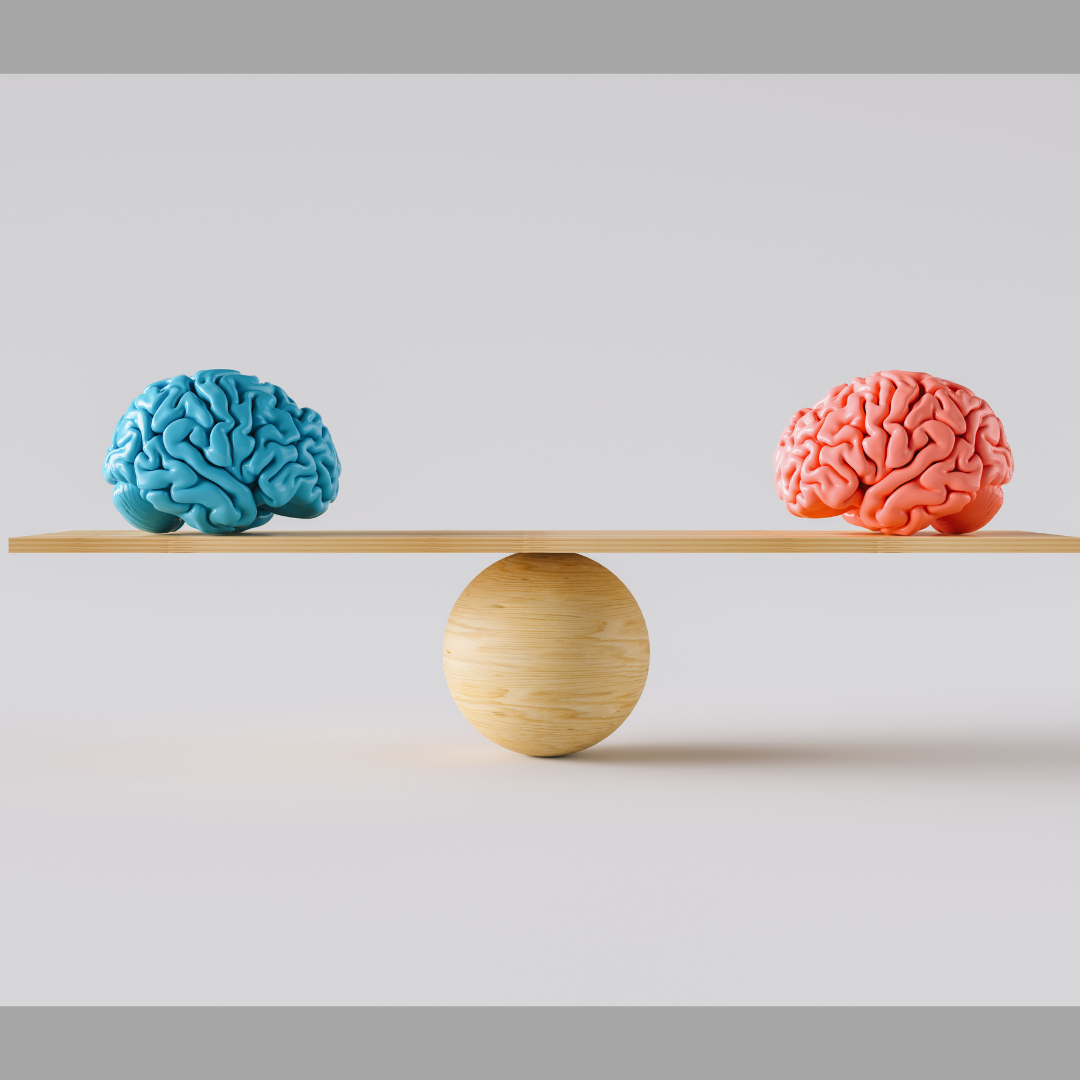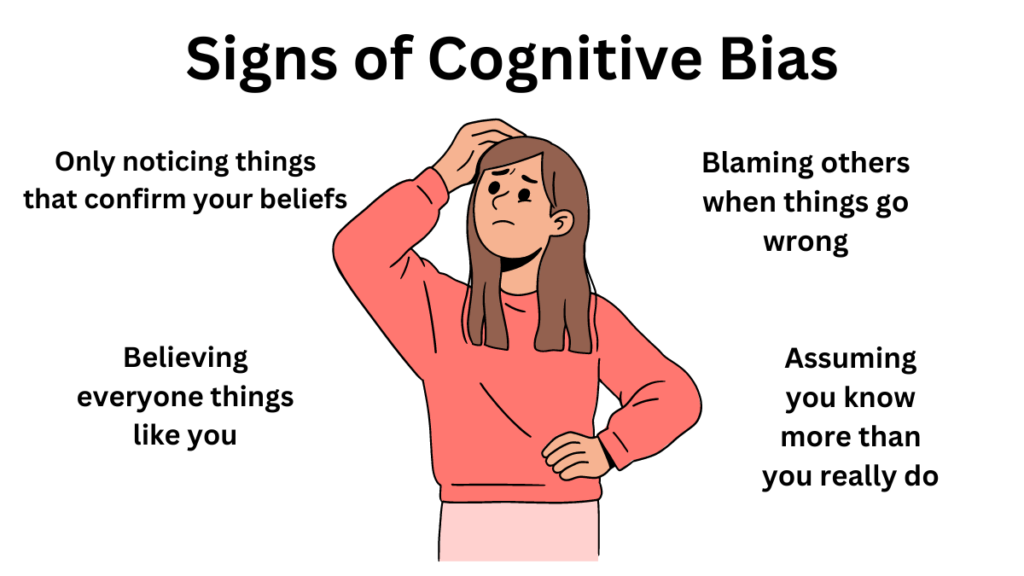Cognitive Bias: Common Types and How to Avoid Them
A cognitive bias is an unconscious systematic pattern of thinking that can result in errors in judgment. These biases stem from the brain’s limited resources and need to simplify the world to make faster decisions. Such biases are often the result of limitations or problems in memory, attention, and information processing. While such biases often…

A cognitive bias is an unconscious systematic pattern of thinking that can result in errors in judgment. These biases stem from the brain’s limited resources and need to simplify the world to make faster decisions.
Such biases are often the result of limitations or problems in memory, attention, and information processing. While such biases often serve as shortcuts that help us make sense of the world around us, they also introduce errors in problem-solving and decision-making.
Cognitive biases were first described by Amos Tversky and Daniel Kahneman in 1972 and grew out of their work in heuristics. Heuristics are mental shortcuts that help speed up thinking. While these biases often help people make sense of the world, they also introduce distortions, illogical thinking, irrationality, and poor judgments.
In this article, learn more about some of the signs and most common types of cognitive biases. Also, discover how to look at and change bias in your own thinking.
Signs of Cognitive Bias

Cognitive bias affects human thought and behavior in powerful ways, but that does not mean they are always easy to spot. A few signs you might be affected by some cognitive bias include:
- Refusing to consider other possible explanations
- Paying more attention to information that confirms what you already believe to be true
- Always assuming that you are right and that other people are wrong
- Believing that everyone else thinks the same way that you do
- Taking credit for success when things go right but blaming others when things go wrong
- Giving more weight to the first information you hear and not considering subsequent information
Becoming more aware of cognitive biases can be helpful, but knowing they exist doesn’t always make them easier to overcome. However, you can often take steps to help compensate and make more accurate decisions.
Types of Cognitive Bias
How many cognitive biases are there? Researchers have identified more than 175 different types of bias. Some of the most common ones include:
Confirmation Bias
This common type of bias involves paying more attention to information that reinforces your beliefs. At the same time, you might discount or ignore things that offer contrary evidence.
Hindsight Bias
This bias, also known as the ‘I-knew-it-all-along’ effect, involves people overestimating the predictability of events. In hindsight, the outcome appears obvious and inevitable. This often makes people feel overly confident in their predictions about the future.
Anchoring Bias
The anchoring bias involves relying too heavily on the first piece of information. Once you hear something, you then rely on it as a baseline to compare further information. If you see a car at a certain price, for example, you might then use that anchor to compare all future car prices.
Self-Serving Bias
The self-serving bias involves a tendency to take personal credit for success but blame external forces for failures. While this can protect self-esteem, it can prevent people from accurately evaluating the causes behind the events in their lives.
Bandwagon Effect
This type of cognitive bias causes people to be more likely to go along with something if many other people are also doing the same thing.
Fundamental Attribution Error
The fundamental attribution error is a cognitive bias that happens when people make assessments of other people’s behavior. When it comes to attributing the action of others, people often tend to place too much emphasis on personal characteristics of the individual while downplaying or underestimating external or situational factors.
Halo Effect
This effect involves judging all of a person’s qualities based on one trait. Also known as the ‘what is beautiful is good’ effect, an example would be believing someone is competent, kind, and generous because they are physically attractive.
Dunning-Kruger Effect
This effect occurs when people mistakenly think they know a great deal about a topic because of their limited knowledge of the subject. The less they understand about it, the easier the topic appears. It is only after becoming more informed that people begin to appreciate the complexity and depth of the subject and can put their own limited understanding in context.
Ingroup Bias
The ingroup bias involves attributing positive traits to people who share group affiliations with you. This might involve believing people in that group are more qualified or competent but also favoring members of that group while discounting members of outside groups.
Availability Bias
This type of cognitive bias causes people to base decisions on information that is immediately available. Rather than look for outside information, people base their decisions on the first examples that come to mind.
Projection Bias
The projection bias involves overestimating how much other people agree with how you think, feel, or believe. It shares similarities with the false consensus effect.
Researchers refer to the inability to recognize your own cognitive biases as the bias blind spot.
Identifying Cognitive Bias
Cognitive biases are natural and happen to everyone. While cognitive biases are often problematic, they can also be adaptive.
They often lead to fairly accurate and fast decisions while reducing the mental effort required to make a choice. This can be particularly important when a person faces a threat and needs to devise a solution quickly.
Learning to spot them can help you better determine if they are serving a purpose or preventing you from making accurate judgments.
If you suspect that your thinking is being hindered by bias, ask yourself some questions:
- Are you only paying attention to information that confirms what you already believe?
- Are you blaming the misfortunes of others on their own personal failings while attributing your own misfortunes to external forces?
- Do you assume that most people agree with your beliefs and opinions on different topics?
- Do you assume that the first thing you learn about something is accurate and discount subsequent information?
- Is your initial good impression of something affecting your subsequent assessments?
- Do you ever look back on an event and feel like you knew the outcome all along?
Detecting and preventing bias every type of bias isn’t possible. Everyone has biases, often shaped by their perceptions and experiences.
While you might not be able to prevent it, you can get better at identifying your own biases and looking for ways to be less biased and more objective when possible.
How to Prevent Cognitive Bias
What can you do to help minimize the potentially negative effects of cognitive biases on your judgments? Steps that you can take include:
Take Your Time
When making a decision, try to give yourself some time to consider all of the aspects of the situation and the potential pros and cons of each choice.
Reduce Distractions
When other things are competing for your attention, it reduces your available mental resources for making a decision. Whenever possible, eliminate distractions so you can focus on the task at hand.
Learn More About Cognitive Bias
Research suggests that cognitive training can help minimize biased thinking. Recognizing bias in your own thinking is often the first step to overcoming it. A 2019 study published in the journal Psychological Science found that participants who had been trained about the effects of bias were 19% less likely to be influenced by confirmation bias when making a choice.
Challenge Your Thinking
Actively questioning your choices and looking for sources of bias can also be helpful. Analyzing your choices can help you think more critically in various situations.
Get Some Perspective
If you’re having trouble checking for bias, consider seeing other people’s thoughts. Group decisions aren’t necessarily free from bias (because other people are affected by cognitive biases as well), but sometimes, getting an outside perspective can help you see things from another point of view.
Summary
Cognitive biases are flaws in the way that we think. They can speed up thinking and simplify the world around us, but they can also cause us to make poor choices.
Getting rid of all biases isn’t realistic, but there are ways to get better at spotting biases in your thinking. Learning more about these biases, how they work, and their effects can help you get better at spotting flaws in thinking and making better decisions.

Sources:
American Psychological Association. Availability heuristic. APA Dictionary of Psychology; 2020.
Friedman HH. Cognitive biases that interfere with critical thinking and scientific reasoning: a course module. SSRN Journal. Published online 2017. doi:10.2139/ssrn.2958800
Sellier A-L, Scopelliti I, Morewedge CK. Debiasing training improves decision making in the field. Psychol Sci. 2019;30(9):1371-1379. doi:10.1177/0956797619861429
van Geene K, de Groot E, Erkelens C, Zwart D. Raising awareness of cognitive biases during diagnostic reasoning. Perspect Med Educ. 2016;5(3):182-185. doi:10.1007/s40037-016-0274-4
Yik M, Wong KFE, Zeng KJ. Anchoring-and-adjustment during affect inferences. Front Psychol. 2019;9:2567. doi:10.3389/fpsyg.2018.02567





